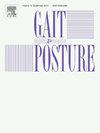Automated quantification of the anatomic accuracy of muscle paths and its application in an image-based subject-specific modeling workflow for adult spinal deformity
IF 2.2
3区 医学
Q3 NEUROSCIENCES
引用次数: 0
Abstract
Background
Musculoskeletal models (MSKM) can non-invasively evaluate the effect of altered muscle geometry and physiology on locomotor function. Nevertheless, this requires anatomically accurate muscle paths throughout functional ranges of motion. However, reference data to evaluate such muscle paths is rarely available, including in adult spinal deformity (ASD). Although this degenerative disorder alters muscle geometry and physiology, these parameters are not available to inform clinical decision-making as generic MSKM cannot account for these alterations, and reliable ASD-specific modeling workflows do not currently exist.
Research question
Can an efficient workflow be developed for evaluating and optimizing the anatomic accuracy of dynamic muscle paths in personalized MSKM and applied for reliable spinal motion simulations in ASD?
Methods
A workflow was developed to automatically analyze anatomic muscle accuracy throughout predefined ranges of motion in terms of muscle-bone penetration, muscle action, moment arm magnitude, and discontinuities. Erector spinae, multifidus, and psoas muscles were semi-automatically segmented in magnetic resonance images of one healthy and two ASD subjects. Next, their muscle representation, insertion sites, and complexity were iteratively refined with the above workflow to generate subject-specific MSKM and compare them against state-of-the-art generic MSKM.
Results
All muscles in the subject-specific MSKM were anatomically accurate, except for discontinuities in 3.81 % (psoas) and 0.37 % (multifidus) of moment arm curves across motions and subjects. In contrast, scaled generic MSKM were consistently associated with muscle-bone penetration, decreased moment arm magnitude, and opposite muscle actions.
Significance
This novel workflow is the first to allow for an efficient evaluation of the anatomic accuracy of dynamic muscle paths. Its application in MSKM of ASD patients resulted in subject-specific muscle paths, with an anatomically correct muscle geometry, while preventing bone penetration during the representative range of motions. The workflow is promising to enable biomechanical analyses of ASD with an accuracy beyond that of scaled generic models.
肌肉路径解剖精度的自动量化及其在成人脊柱畸形基于图像的特定对象建模工作流程中的应用
肌肉骨骼模型(MSKM)可以无创地评估肌肉几何和生理变化对运动功能的影响。然而,这需要解剖学上准确的肌肉路径贯穿运动的功能范围。然而,评估这种肌肉路径的参考数据很少,包括成人脊柱畸形(ASD)。虽然这种退行性疾病改变了肌肉的几何形状和生理机能,但这些参数不能用于临床决策,因为通用的MSKM不能解释这些改变,而且目前还不存在可靠的asd特异性建模工作流程。研究问题:能否开发一种有效的工作流程来评估和优化个性化MSKM中动态肌肉路径的解剖准确性,并应用于可靠的ASD脊柱运动模拟?方法开发了一个工作流程,在预定义的运动范围内自动分析解剖肌肉的准确性,包括肌肉骨穿透、肌肉动作、力臂大小和不连续。对1名健康受试者和2名ASD受试者的磁共振图像进行竖脊肌、多裂肌和腰肌的半自动分割。接下来,它们的肌肉表示、插入位置和复杂性使用上述工作流程进行迭代改进,以生成特定于受试者的MSKM,并将它们与最先进的通用MSKM进行比较。结果除3.81 %(腰肌)和0.37 %(多裂肌)的力臂曲线在不同运动和受试者之间存在不连续性外,受试者特异性MSKM的所有肌肉在解剖学上都是准确的。相比之下,标度的通用MSKM始终与肌骨穿透、力臂大小减小和相反的肌肉动作相关。意义:这种新颖的工作流程首次允许对动态肌肉路径的解剖准确性进行有效评估。它在ASD患者MSKM中的应用产生了受试者特异性肌肉路径,具有解剖学上正确的肌肉几何形状,同时在代表性运动范围内防止骨穿透。该工作流程有望使ASD的生物力学分析具有比比例通用模型更高的准确性。
本文章由计算机程序翻译,如有差异,请以英文原文为准。
求助全文
约1分钟内获得全文
求助全文
来源期刊

Gait & posture
医学-神经科学
CiteScore
4.70
自引率
12.50%
发文量
616
审稿时长
6 months
期刊介绍:
Gait & Posture is a vehicle for the publication of up-to-date basic and clinical research on all aspects of locomotion and balance.
The topics covered include: Techniques for the measurement of gait and posture, and the standardization of results presentation; Studies of normal and pathological gait; Treatment of gait and postural abnormalities; Biomechanical and theoretical approaches to gait and posture; Mathematical models of joint and muscle mechanics; Neurological and musculoskeletal function in gait and posture; The evolution of upright posture and bipedal locomotion; Adaptations of carrying loads, walking on uneven surfaces, climbing stairs etc; spinal biomechanics only if they are directly related to gait and/or posture and are of general interest to our readers; The effect of aging and development on gait and posture; Psychological and cultural aspects of gait; Patient education.
 求助内容:
求助内容: 应助结果提醒方式:
应助结果提醒方式:


